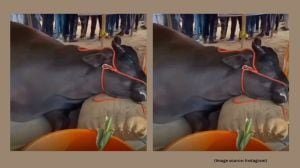Stay updated with the latest - Click here to follow us on Instagram
Keeping track
Forest department for the first time used a scientific method during the recently concluded population estimation exercise at Sanjay Gandhi National Park (SGNP) and Tungareshwar Wildlife Sanctuary from February 23 to March 2.
After using traditional methods for annual animal census for many years,the forest department for the first time used a scientific method during the recently concluded population estimation exercise at Sanjay Gandhi National Park (SGNP) and Tungareshwar Wildlife Sanctuary from February 23 to March 2.
On the last day of the exercise,Newsline accompanied forest department team and volunteers who pored over every inch of the forest to study the signs and symbols left behind by its residents.
The nine-day survey conducted between 6 am and noon involved teams of forest guards and volunteers employing the line transect method to estimate the population of carnivores on the first three days,herbivores over the next three days and study vegetation on the last three days.
The line transect method a preferred method of estimation in a tiger reserve involves drawing a two-km transect line in every beat or small area of the forest,which in SGNP is about 20-25 sq km on average. At every 400 metres along that line,a circle of 15 metre in diameter was drawn,with six such circles drawn in total.
Each circle was keenly studied and samples were collected and observations recorded in charts. In case of carnivores,teams were on the lookout for animal scat,pug marks,claw marks on trees and were alert for sightings. One of the teams was lucky to spot three leopards near an artificial pond on the third day. For herbivores,apart from droppings,teams kept an eye out for antler rubbing marks on trees. Meanwhile,in the vegetation study,types of big trees and their numbers,bush growth,percentage of leaf fall and types of grasses were studied.
Each study has its own significance. While the herbivore and carnivore survey is to estimate the population and better wildlife management,the vegetation is studied for critical habitat development,to correlate it with herbivores. Thus,if an endangered species is found to have a particular affinity for a type of tree or bush,those can be planted in more numbers to conserve the species.
The observations will be tabulated and an estimation model used to predict the estimated number of herbivores and carnivores.







